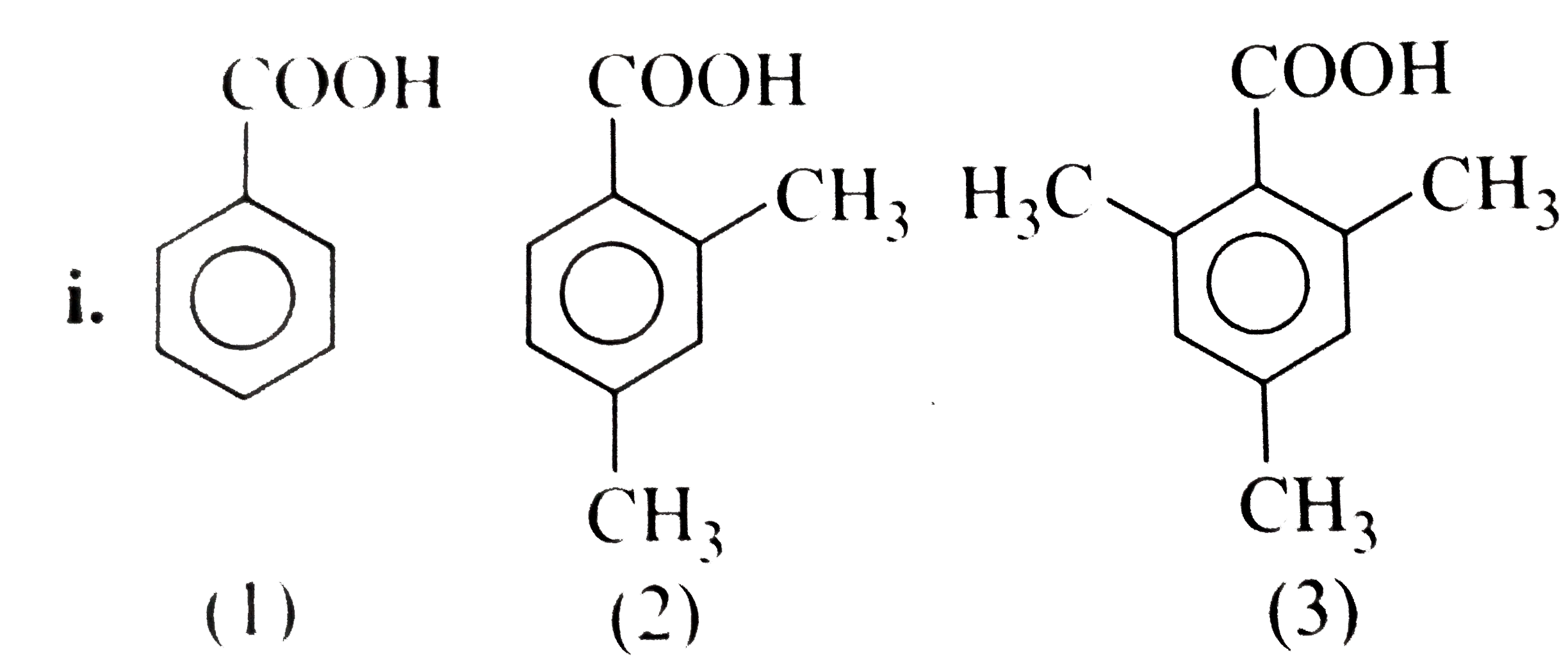CH3OC2H5 and (CH3)3COCH3 are treated with hydroiodic acid. The fragments after reaction obtained are
CH3I+HOC2H5,(CH3)3I+HOCH3
CH3OH+C2H5I,(CH3)3I+HOCH3
CH3OH+C2H5I,(CH3)3C−OH+CH3I
CH3I+HOC2H5,CH3I+(CH3)3C−OH
The correct Answer is:A
NA
Topper's Solved these Questions
- BOOK - DINESH PUBLICATIONCHAPTER - NO IDEAEXERCISE - Linked Compression6videos
NO IDEA
- BOOK - DINESH PUBLICATIONCHAPTER - NO IDEAEXERCISE - Matrix1videos
NO IDEA
- BOOK - DINESH PUBLICATIONCHAPTER - NO IDEAEXERCISE - Revision Question form competitive exams.43videos
NO IDEA
- BOOK - DINESH PUBLICATIONCHAPTER - IONIC EQUILIBRIUM EXERCISE - UNIT TEST -230videos
IONIC EQUILIBRIUM
- BOOK - DINESH PUBLICATIONCHAPTER - ORGANIC COMPOUNDS WITH FUNCTIONAL GROUP CONTAINING HALOGENS EXERCISE - UNIT TEST - 537videos
ORGANIC COMPOUNDS WITH FUNCTIONAL GROUP CONTAINING HALOGENS
Similar Questions
Out of CH3CH2COCH2CH3 and CH3CH2CH2COCH3 which gives iodoform test ?
View Solutiona. Acid halides, anhydrides, esters and amides, all of them contain (C=O) group but none of them gives test for (C=O) group, i.e., they do not form oximes, hydrazones, and DNP derivatives, etc. Why?
b. Arrange the following in the decreasing order of nucleophilic addition.
i. (1)−CHO
(2)−COCH3
(3)−COOH
(4)−COCI
(5)−CONH2
(6)−COOCH3
(7)−COOΘ
ii. (1)CH3CHO
(2)CH3COCH3
(3)HCHO
(4)CH2H5CH2COCH3
iii. (1)CH3COCH3
(2)C6H5COCH3
(3)C6H5COC6H5
(4)C6H5CH2COCH3
iv. (1)C6H5CHO
(2)ρ−CH3.C6H4.CHO
(3)ρ−OH.C6H4.CHO
(4)ρ−NO2.C6H4.CHO
(5)ρ−CI.C6H4.CHO
v. (1)HCHO
(2)CH3CHO
(3)CH3COCH3
(4)CI3CCHO
c. Arrange the following in the increasing order of ease of hydrolysis.
(1)CCH3COOC2H5
(2)CH3COCI
(3)(CH3CO)2O
(4)CH3CONH2
d. Arrange the following in the increasing order of ease of acid-catalysed esterification of:
i.
ii. (1)CH3CH2COOH
(2)(CH3)2CHCOOH
(3)(CH3)3CCOOH
iii. (1)CH3CH2CH2OH
(2)CH3CHOHC2H5
(3)(CH3)2C(OH)C2H5
e. Arrange the following esters in decresing order of ease of alkaline hydrolysis.
i. (1)HCOOCH3
(2)CH3COOCH3
(3)(CH3)3CCOOCH3
(4)(CH3)2CHCOOCH3
ii. (1)CH3COOCH3
(2)CH3COOC(CH3)3
(3)CH3COOCH(CH3)2
(4)CH3COOCH2CH3
iii. (1)C6H5COOCH3
(2)ρ−CH3O−C6H4−CCOOCH3
(3)ρ−NO2−C6H4−COOCH3
(4)ρ−Cl−C6H4−COOCH3View Solution
Knowledge Check
- Question 1 - Select One
CH3OC2H5 and (CH3)3COCH3 are treated with hydroiodic acid. The fragments after reaction obtained are
ACH3I+HOC2H5,(CH3)3C−I+HOCH3BCH3OH+C2H5I,(CH3)3C−I+HOCH3CCH3OH+C2H5I,(CH3)3C−OH+CH3IDCH3I+HOC2H5,CH3I+(CH3)3C−OH - Question 2 - Select One
CH3OC2H5 and (CH3)3COCH3 are treated with hydriodic acid. The fragments after reaciton obtained are
ACH3I+HOC2H5,(CH3)3C−I+HOCH3BCH3OH+C2H5I,(CH3)3C−I+HOCH3CCH3OH+C2H5I,(CH3)3C−OH+CH3IDCH3I+HOC2H5,CH3I+(CH3)3C−OH - Question 3 - Select One
CH3COCH3 can be obtained by
AHeating acetaldehyde with methanolBOxidation of propyI alcoholCOxidation of isopropyI alcoholDReduction of propionic acid
CH3COCH3 can be converted to CH3CH2CH3 by the action of
View SolutionThe compounds C2H5OC2H5andCH3OCH2CH2CH3 are
View SolutionThe IUPAC name of CH3CH2CH2CH(CH3)COCH3 is
View SolutionCondiser the reactions,
(i) (CH3)2CH−CH2BrC2H5OH−−−−→(CH3)2CH−CH2OC2H5+HBr
(ii) (CH3)2CH−CH2BrC2H5O−−−−−−→(CH3)2CH−CH2OC2H5+Br−
The mechanism of reactions (i) and (ii) are respectively :View SolutionIUPAC name of CH3CH2COCH3 is _________.
View Solution

